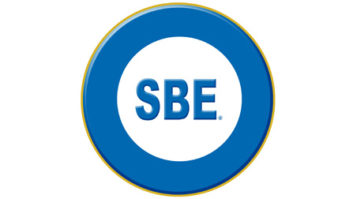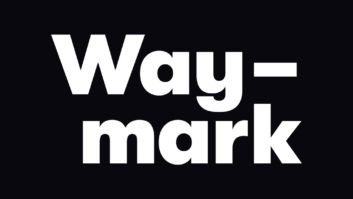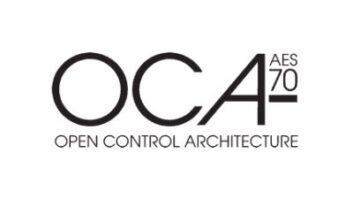IBOC Update – Jun 22, 2005
Jun 22, 2005 9:29 AM, By Mark Krieger, CBT
Stay up to date on the latest IBOC news, business and technology information with the twice-monthly newsletter from Radio magazine.
Index:
- FCC Seeks Input on NRSC-5 IBOC Standards
- House Committee Cuts CPB Digital Transition Funds
- MP3 Cell Phone Music Service on Fast Forward
- XM and Audible Ink Content/Marketing Pact
- Sirius to Boost Channel Capacity, Provide Wireless Content
- Canada Licenses Satellite and Terrestrial Subscription Radio Services
- NRSC-5 Under the Microscope
- An Introduction to the New Language Surrounding HD Radio
- IBOC by State: Oregon
To receive these articles twice a month in your e-mail, subscribe to the IBOC Update – Insight on HD Radio e-newsletter. Click here to subscribe.NewsFCC Seeks Input on NRSC-5 IBOC Standards
On June 16, The FCC issued Public Notice DA 05-1661 requesting comments from all interested parties regarding the “In Band/On Channel Digital Radio Broadcasting Standard NRSC-5” submitted to the FCC by the National Radio Systems Committee (NRSC) on May 18, 2005.Specifically, the Commission is seeking a full range of comments on the NRSC-5 standard, along with ex parte presentations by interested individuals and organizations. The current deadline for filing comments is July 18, with replies due no later than Aug. 17.Once the filing window for comments and replies closes, work on a Digital Radio Broadcasting Report and Order is likely to begin in earnest. Opinions among industry observers differ on how long the rulemaking process will take, with some expecting no action from the FCC before the end of the year.Contentious issues that remain for the Commission to resolve include nighttime AM IBOC operation and interference resolution, use of IBOC on “superpowered” FM signals, and acceptable parameters for the use of separate analog and digital FM antennas.Those interested in reviewing the complete NRSC-5 document can retrieve it on the Web at gullfoss2.fcc.gov/prod/ecfs/comsrch_v2.cgiThe FCC’s public notice can be viewed on the Web at hraunfoss.fcc.gov/edocs_public/attachmatch/DA-05-1661A1.docHouse Committee Cuts CPB Digital Transition Funds
The U.S. House or Representatives Labor-HHS Appropriations Committee has cut $39.4 million earmarked for public radio and the TV digital transition, and $39.6 million for interconnection equipment, in addition to another house appropriations committee’s earlier cut of a $21 million technology seed fund, according to a report in Broadcasting and Cable. All told, the total in CPB funding reductions on the table is now said to approach $200 million across the board.The reductions could still be restored in the Senate, as has been the case with similar cuts in the past.There has been no word yet from CPB on how the cuts would directly affect grant funding for IBOC digital radio conversion at public radio stations across the United States, should they survive the Senate and be signed by the President.BusinessMP3 Cell Phone Music Service on Fast Forward
Music download purveyor Napster and wireless handset manufacturer Ericsson have confirmed a joint effort to field a first-ever digital music service direct to cell phones. The firms say they intend to launch the new service sometime in 2006.The strategic partners join an industry-wide push by handset suppliers and wireless network operators to transform higher wireless bandwidths and advanced audio and video integration into personal media functionality including real time, downloadable video and music–all within a single platform already a part of everyday life among most consumers.Don’t be in a rush to declare millions of embedded Ipods and Walkmans obsolete, however. Most media analysts and consultants believe that consumers will be slow to abandon familiar, specialized media platforms in favor of the equivalent of a media Swiss army knife. Instead, the experts say, consumers are more likely to tap the strengths of both technologies, using them concurrently.XM and Audible Ink Content/Marketing Pact
Audible Ink, provider of digitally delivered spoken-word audio, and satellite radio broadcaster XM recently announced the formation of a multifaceted strategic relationship that will allow both firms to cross-market each other’s content, while jointly developing new technology for audio consumers.In 2006 Audible and XM will introduce the first portable, hand-held satellite radio devices that are capable of playing the XM service as well as Audible’s spoken-word content, which can be downloaded from the Web into the devices’ memory. With the launch of these “AudibleReady/XM” devices, XM subscribers will be able to expand their listening experience through the purchase of audiobooks and other content from Audible.In addition to these new products, Audible says it will offer popular XM talk programs via the Audible website within the current year, beginning with The Bob Edwards Show and Opie and Anthony joining more than 45 regularly recurring audio subscriptions available for downloads to users of Audible Ready digital audio devices.Also this year, XM will produce a new Audible audiobook program for broadcast on XM Satellite Radio that will consist of features, interviews and news focusing on the rich content of audiobooks and other spoken-word listening. Audible will co-produce the program and offer it for download at its website.Sirius to Boost Channel Capacity, Provide Wireless Content
Sirius Satellite Radio recently entered into an agreement with wireless provider Sprint to offer select Sirius Satellite Radio programming to network subscribers. Some of the music genres said to be undergoing evaluation for possible channels in the new service include current hits, classic rock, hip-hop, country, blues, broadway and soul. Sprint says the new service will be offered nationwide, with details and pricing to be announced later this year.In a separate announcement, Sirius also announced development of proprietary technology that will permit it to increase total system capacity by about 25 percent within the existing digital transmission system. The company claims the new technology, known in the industry as hierarchical modulation, will allow it to offer additional audio channels, and advanced services such as data and video, without affecting the quality of its current broadcasts.The technology, developed by Sirius’ Advanced Development Team based in Lawrenceville, NJ, is said to be compatible with the current network, requiring minimal upgrades to its satellite uplink and terrestrial repeater infrastructure.The company says its new technology will not impact the customer experience of existing Sirius radios sold or currently on the market, but that only the next generation of receivers will be compatible with the additional channels and data. The company expects to begin offering the new services in the second-half of 2006.Canada Licenses Satellite and Terrestrial Subscription Radio Services
The Canadian Radio-Television and Telecommunications Commission (CRTC) has approved three subscription radio licenses and established a licensing framework for satellite subscription radio services.The Commission approved the license applications of Sirius Canada and Canadian Satellite Radio for subscription radio services to be delivered by satellite and terrestrial transmitters, and the application by CHUM Limited (CHUM/Astral) to offer subscription radio services via terrestrial transmitters only.According to the CRTC, the new services will provide more program choices and greater cultural diversity for Canadians, particularly those in rural and remote areas, where broadcasting choices have been limited in the past.Reactions among business and consumer groups across Canada was mixed, however, as the Commission placed significant content restrictions on the two newly licensed satellite radio services, designed to ensure the broadcast of Canadian content and to benefit established and new Canadian artists.The Commission is requiring that the satellite subscription radio licensees offer: - At least eight original channels produced in Canada. A maximum of nine foreign channels may be offered for each Canadian channel;
- At least 85 percent of the musical selections and spoken word programming broadcast on the Canadian channels must be Canadian;
- At least 25 percent of the Canadian channels must be in the French language;
- At least 25 percent of the musical selections on the Canadian channels must be new Canadian musical selections;
- A further 25 percent of the selections must be by emerging Canadian artists.
The licensees must also contribute at least 5 percent of their gross annual revenues to initiatives for the development of Canadian talent, to groups such as Factor or Music Action.The CHUM/Astral licensees, in contrast, will have only to comply with the 35 percent Canadian content requirement that currently pertains to traditional AM and FM broadcasters in that country, with 65 percent French musical content on French-language channels.Socially minded critics have called the CRTC grants a sell-out to American satellite groups Sirius and XM, while business-minded investors in say that content requirements could stifle growth and unnecessarily complicate programming. Furthermore, experts say Sirius- and XM-backed CSR may wind up having to carry the same Canadian content channels on their U.S. networks to simplify distribution–and that could hamper revenue growth in their respective domestic markets.The CRTC addressed nationalist criticisms of licensing the two U.S.-backed satellite groups by pointing out that no Canadian-owned spacecraft suited to the services currently exists, or are likely to be built in the near future.The CRTC is an independent, public authority established to regulate Canadian broadcasting and telecommunications in the public interest, and reports to the Canadian Parliament through the Minister of Canadian Heritage.Eye on IBOCNRSC-5 Under the Microscope
With the submission of the NRSC’s long-awaited Digital Radio Broadcast Standard to the FCC, and the Commission’s request for comments on the document, IBOC digital radio now stands on threshold of its first major rulemaking.While the committee has discharged its responsibility to the broadcast industry with customary dedication and diligence, no one expects the standard to address every potential issue and question regarding the IBOC digital technology developed and licensed by Ibiquity. One politically sensitive item that’s already surfaced is the absence of a complete specification for the audio codec, which Ibiquity was unable to fully disclose due to intellectual property restrictions imposed by the codec’s developers.Members of the NRSC have been quick to point out that every effort was made to organize and publish the most specific and detailed information available. But with Ibiquity facing potential litigation, and the immediacy of the task before them, the committee had no other option but to move ahead without the full codec specification.The fact that a proprietary system has emerged as America’s best solution to the digital radio dilemma troubles some within the radio industry. At least a few are likely to oppose adoption of the IBOC digital standard as written. But every thinking individual involved in the business of radio, on the broadcast or consumer side, owes a debt of gratitude to the men and women who volunteered their time, intellect, and reputations to see that America’s radio broadcasters would have a workable digital standard at a time when it’s most urgently needed.And so, regardless of one’s position on IBOC and the FCC’s pending rulemaking, a round of applause is due the members of the National Radio Standards Committee. They have earned our respect, and deserve our gratitude, as the United States begins its grand experience with digital radio broadcasting in the 21st century.HD Radio TermsAn introduction into the language surrounding IBOCSIS: Station Information ServiceMPS: Main Program ServiceIBOC Across AmericaIBOC By State: Oregon
Ibiquity has a list of stations that have licensed HD Radio technology and notes those that are on the air now. IBOC by state will look at various states and list the stations that are making the transition.Station Format Market Owner On Air KBOO-FM 90.7 Variety Portland, OR KBOO Foundation No KBPS-FM 89.9 Classical Portland, OR KBPS Public Radio Foundation No KEX-AM 1190 FuSvc/AC Portland, OR Clear Channel Radio Yes KGON-FM 92.3 Clsc Rock Portland, OR Entercom Communications Yes KKCW-FM 103.3 AC Portland, OR Clear Channel Radio Yes KKRZ-FM 100.3 CHR Portland, OR Clear Channel Radio Yes KKSN-FM 97.1 Oldies Portland, OR Entercom Communications No KMHD-FM 89.1 Jazz Portland, OR Mt. Hood Community College No KOPB-FM 91.5 Info/News Portland, OR Oregon Public Broadcasting Yes KRSK-FM 105.1 Hot AC Portland, OR Entercom Communications Yes KRVO-FM 105.9 Clsc Rock Portland, OR Clear Channel Radio Yes KWJJ-FM 99.5 Country Portland, OR Entercom Communications Yes












